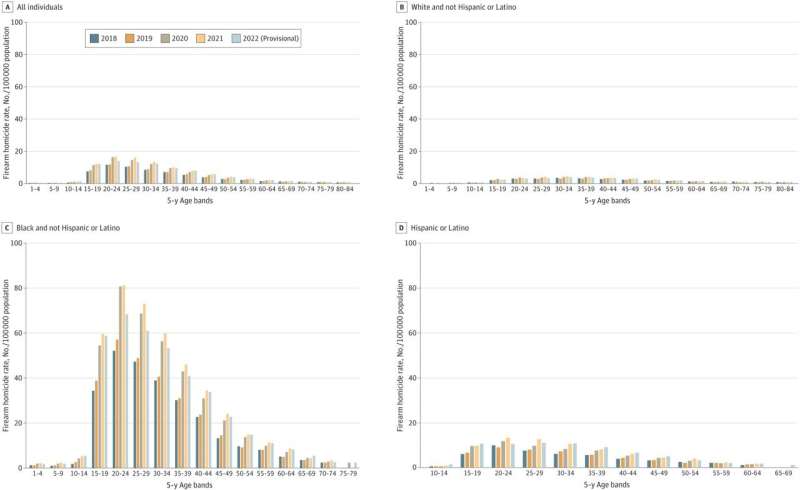PTSD Ran High Among Physicians During COVID-19 Pandemic; US Homicides by Firearms Concentrated Among Black Youth Before, During, and After the Start of COVID-19 Pandemic, and other C-Virus related stories
PTSD Ran High Among Physicians During COVID-19 Pandemic:
Nearly 1 in 5 physicians experienced post-traumatic stress disorder (PTSD) during the COVID-19 pandemic, according to a review and meta-analysis.
In an analysis of 57 studies, the estimated pooled prevalence of PTSD among physicians was 18.3%, a figure more than 3 times higher than the general population, Manish Sood, MD, of Ottawa Hospital Research Institute in Canada, and colleagues reported in JAMA Network Open.
Female physicians were almost twice as likely as male physicians to develop PTSD, and medical trainees were more likely to develop PTSD than attendings they found.
When analyzed by specialty, PTSD was most common among family medicine physicians (31.2%), followed by emergency medicine physicians (23.4%), they reported.
“We have to think about how we support these physicians [and] the consequences of [the pandemic],” Sood told MedPage Today, noting that there’s been increased awareness of physician mental health issues, but more investment is needed in physician well-being, especially in the aftermath of the pandemic.
Michael Myers, MD, of SUNY Downstate Medical Center in New York and an expert on physician health who wasn’t involved in the study, told MedPage Today the findings aren’t surprising given that during the pandemic, “many doctors were feeling that they didn’t [have] enough PPE [personal protective equipment], having to work brutal hours, and they didn’t always feel supported. So they kind of felt like sacrificial lambs.”
Myers said there were two important outcomes not mentioned in the paper: moral injury and post-traumatic growth, the latter of which occurs when a person feels “a sense of resilience that comes out of the processing and hard work of growing through PTSD.” —>READ MORE HERE
US homicides by firearms concentrated among Black youth before, during, and after the start of COVID-19 pandemic
In 2020, the United States saw the largest one-year increase in homicides since 1960. In a new study, researchers examined disparities in race and ethnicity for deaths by firearm homicides from 2018 to 2022, before, during, and after the start of the COVID-19 pandemic. They found that deaths by firearm homicide were concentrated among Black 15- to 24-year-olds in all of the years studied, suggesting that social and structural conditions contributed to these racial disparities.
The article, by researchers at the University of Miami and the University of Chicago, appeared in JAMA Network Open as a research letter.
“Our findings have implications for prevention and intervention strategies to address the needs of individuals at highest risk,” says Alex R. Piquero, professor of sociology and criminology at the University of Miami, who coauthored the study. Piquero and his co-author, John K. Roman, director of the Center on Safety and Public Justice at the University of Chicago, are experts whose work is promoted by the NCJA Crime and Justice Research Alliance.
The spike in homicides in 2020 began in the first few months of the year, accelerating during the early months of the pandemic, emergency measures, the murder by police of George Floyd, and subsequent social protests. According to the U.S. Centers for Disease Control and Prevention, the rise was largely due to firearm injuries: While the overall homicide rate increased 29%, the firearm homicide rate rose 35%. —>READ MORE HERE
Follow links below to relevant/related stories and resources:
Netflix Black Death Comedy Inspired By COVID-19 Pandemic
Brain fog, fatigue and fear of crowds. Boise residents share about post-pandemic life
USA TODAY: Coronavirus Updates
YAHOO NEWS: Coronavirus Live Updates
NEW YORK POST: Coronavirus The Latest








Comments are closed.